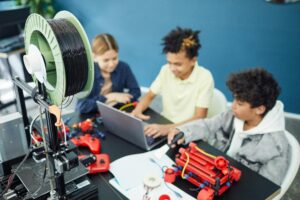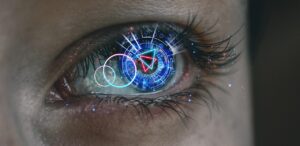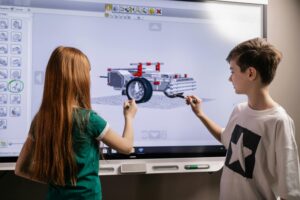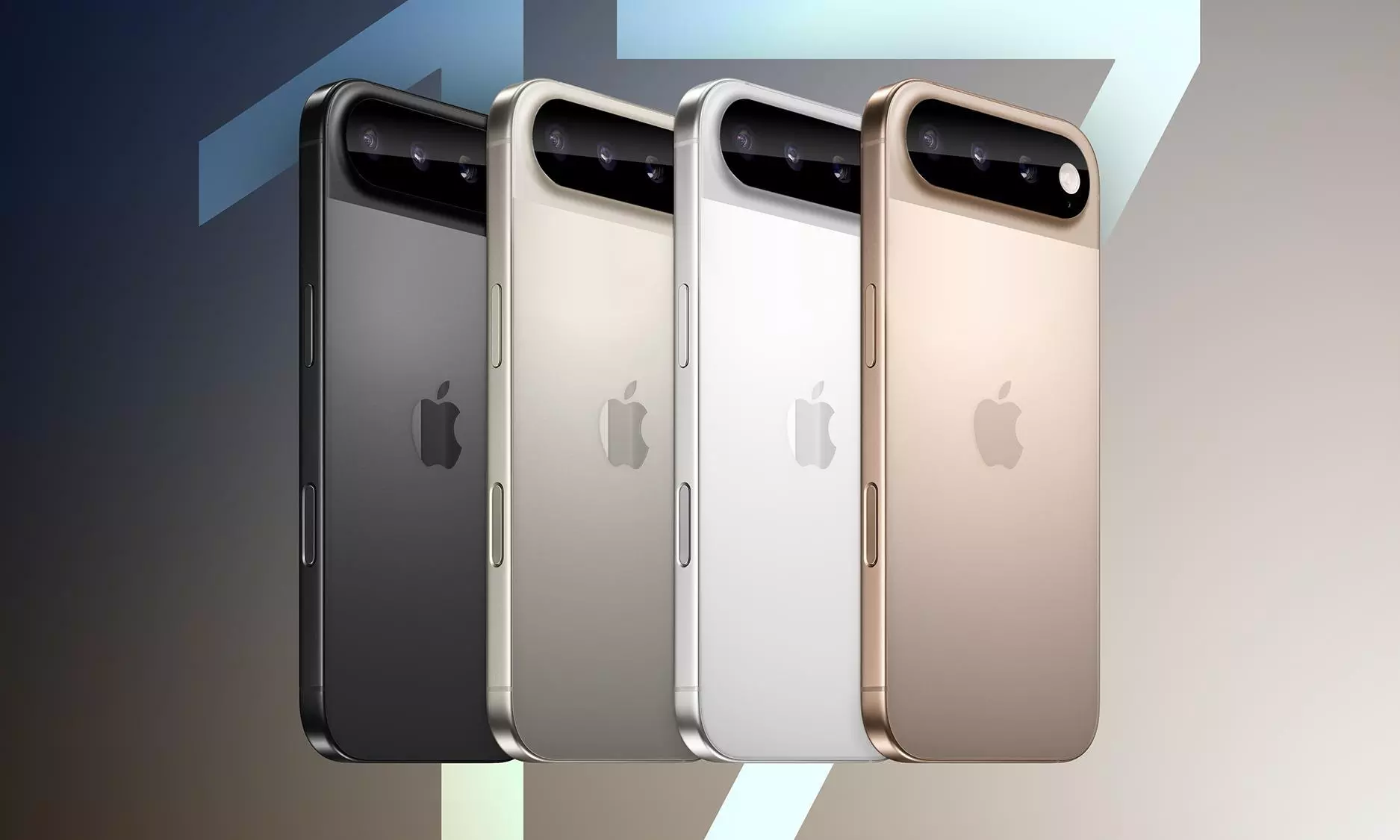Robotics and Computer Vision: The Future of Intelligent Machines
Introduction
The convergence of robotics and computer vision has unlocked a new era in technology, where machines are not just programmable entities but intelligent agents capable of perceiving, interpreting, and interacting with the real world. Traditionally, robots were constrained by rigid programming and limited sensor data. They could perform repetitive tasks with precision but lacked adaptability. Computer vision, on the other hand, provides robots with “eyes” — the ability to perceive their environment, recognize objects, and make decisions based on visual input.
From autonomous vehicles and industrial automation to healthcare, agriculture, and household assistance, the integration of computer vision into robotics is redefining how we view machines. This article explores the fundamentals, techniques, applications, challenges, and the promising future of robotics and computer vision.
Understanding Robotics and Computer Vision
What is Robotics?
Robotics is the interdisciplinary field that combines engineering, computer science, and artificial intelligence to design, build, and operate robots. Robots are physical agents capable of carrying out tasks autonomously or semi-autonomously. Core areas of robotics include:
-
Mechanical Design – creating the physical structure.
-
Control Systems – enabling movement and precision.
-
Artificial Intelligence – allowing decision-making.
-
Sensors and Actuators – interacting with the environment.
What is Computer Vision?
Computer vision is a field of artificial intelligence that enables machines to interpret and process visual data from the world, similar to human vision. By analyzing images and videos, computer vision systems can detect objects, classify items, track movements, and understand spatial context.
Key areas of computer vision include:
-
Image Classification
-
Object Detection
-
Image Segmentation
-
Pose Estimation
-
Scene Understanding
When combined with robotics, computer vision provides the sensory intelligence that enables robots to adapt to dynamic environments rather than following rigid instructions.
The Role of Computer Vision in Robotics
Computer vision acts as the “perceptual layer” of robotic systems. Just as humans rely heavily on sight to navigate and interact, robots leverage computer vision for:
-
Object Detection and Recognition – Identifying tools, products, or obstacles in real-time.
-
Navigation and Mapping – Guiding robots through complex environments (e.g., SLAM – Simultaneous Localization and Mapping).
-
Manipulation and Grasping – Helping robotic arms pick up objects with precision.
-
Human-Robot Interaction – Recognizing human gestures, faces, and emotions.
-
Autonomous Decision Making – Interpreting visual inputs to act intelligently in dynamic scenarios.
Core Technologies Behind Robotics and Computer Vision
1. Sensors and Cameras
Robots rely on a range of visual sensors:
-
RGB Cameras – Standard vision input.
-
Depth Cameras – Understanding distance and 3D structure.
-
LiDAR – Laser-based sensing for mapping and navigation.
-
Infrared Cameras – Thermal imaging for special applications.
2. Algorithms and Machine Learning
Computer vision algorithms powered by deep learning (Convolutional Neural Networks – CNNs) drive recognition and decision-making:
-
YOLO (You Only Look Once) for real-time object detection.
-
ResNet, VGG for classification.
-
Mask R-CNN for segmentation.
3. SLAM (Simultaneous Localization and Mapping)
SLAM allows robots to map an unknown environment while keeping track of their own location. It is fundamental in autonomous vehicles and service robots.
4. Robotic Control Systems
Control algorithms integrate vision input into motion. For example, a robotic arm guided by vision can adapt its grip if an object shifts position.
5. Edge AI and Embedded Vision
Processing visual data in real-time is resource-intensive. Edge AI enables robots to analyze data locally on embedded processors rather than relying on cloud computation, improving speed and autonomy.
Applications of Robotics and Computer Vision
1. Autonomous Vehicles
Self-driving cars are perhaps the most well-known application. They rely on cameras, LiDAR, and vision algorithms to detect pedestrians, road signs, obstacles, and traffic conditions.
2. Industrial Automation
-
Quality Control – Vision-enabled robots detect product defects with microscopic precision.
-
Assembly Lines – Robots identify and manipulate components dynamically.
-
Packaging – Computer vision ensures accuracy and speed.
3. Healthcare and Surgery
-
Medical Imaging – Robots assist doctors in diagnosis using real-time vision analysis.
-
Surgical Robotics – Vision-guided precision allows minimally invasive surgeries.
-
Rehabilitation Robotics – Robots track patient movement for personalized therapy.
4. Agriculture
-
Crop Monitoring – Vision drones analyze crop health.
-
Fruit Picking Robots – Vision-based arms identify ripe produce.
-
Weed Detection – Robots distinguish crops from weeds to optimize farming.
5. Service and Domestic Robots
-
Vacuum Robots – Use computer vision to map rooms and avoid obstacles.
-
Elderly Care Robots – Recognize human gestures, monitor movement, and provide assistance.
-
Retail Robots – Track inventory and assist customers.
6. Security and Defense
-
Surveillance Drones – Vision-equipped drones monitor large areas.
-
Military Robots – Perform reconnaissance with vision-based navigation.
-
Search and Rescue – Robots locate survivors in disaster-struck areas.
Advantages of Robotics and Computer Vision
-
Automation of Complex Tasks – Robots perform tasks requiring precision and adaptability.
-
Reduced Human Risk – Dangerous environments like nuclear plants or war zones are safer with robots.
-
Enhanced Efficiency – Robots increase speed and productivity in industries.
-
Consistency and Accuracy – Computer vision ensures defect-free production and reliable decision-making.
-
Scalability – Robotics solutions can be applied across multiple domains.
Challenges and Limitations
While promising, robotics and computer vision face several challenges:
1. Technical Challenges
-
High Computational Requirements – Vision algorithms need significant processing power.
-
Data Dependency – Training requires large datasets.
-
Lighting and Environment Sensitivity – Vision systems can fail in poor visibility.
2. Cost Barriers
High-quality sensors and computing hardware make robotics expensive.
3. Safety and Reliability
Ensuring robots operate safely around humans remains a major concern.
4. Ethical Concerns
-
Job displacement due to automation.
-
Privacy issues in surveillance.
-
Potential military misuse.
5. Generalization
Robots often struggle to adapt to scenarios outside their training data.
Future Trends in Robotics and Computer Vision
-
AI-Powered Perception – Advancements in deep learning will allow more accurate and adaptable vision systems.
-
Human-Robot Collaboration (Cobots) – Robots that work side by side with humans in industries.
-
Cloud Robotics – Sharing knowledge among robots via cloud-based learning.
-
5G Integration – Faster communication will enhance real-time decision-making.
-
Bio-Inspired Vision Systems – Mimicking human and animal vision for enhanced adaptability.
-
Miniaturization and Edge AI – Smaller, more powerful processors will enable autonomous micro-robots.
-
Ethical AI in Robotics – Developing guidelines to ensure safe and responsible deployment.
Case Studies
1. Amazon Robotics
Amazon warehouses use vision-guided robots to transport goods, reducing human labor in repetitive tasks while improving speed.
2. Tesla Autopilot
Tesla’s autonomous driving system heavily depends on computer vision for lane detection, object recognition, and navigation.
3. Da Vinci Surgical System
A robotic surgical platform that leverages vision to allow surgeons to perform minimally invasive procedures with unmatched precision.
4. Boston Dynamics
Robots like Spot and Atlas showcase advanced vision-enabled navigation and dynamic movement in complex terrains.
Conclusion
Robotics and computer vision together form the cornerstone of next-generation intelligent systems. By endowing robots with the ability to “see” and interpret their environment, we move beyond rigid automation into a realm of adaptability, intelligence, and autonomy. From industrial efficiency to healthcare breakthroughs and from self-driving cars to smart agriculture, the impact of robotics and computer vision is immense.
However, challenges such as cost, safety, and ethical implications must be addressed. As artificial intelligence, machine learning, and vision technologies continue to evolve, robots will become not just tools but collaborative partners, working alongside humans to shape a smarter, safer, and more efficient future.
New Methods for Robot Control from Single Cameras (Neural Jacobian Fields)
Faster Methods for Chemical Property Prediction (ChemXploreML)






